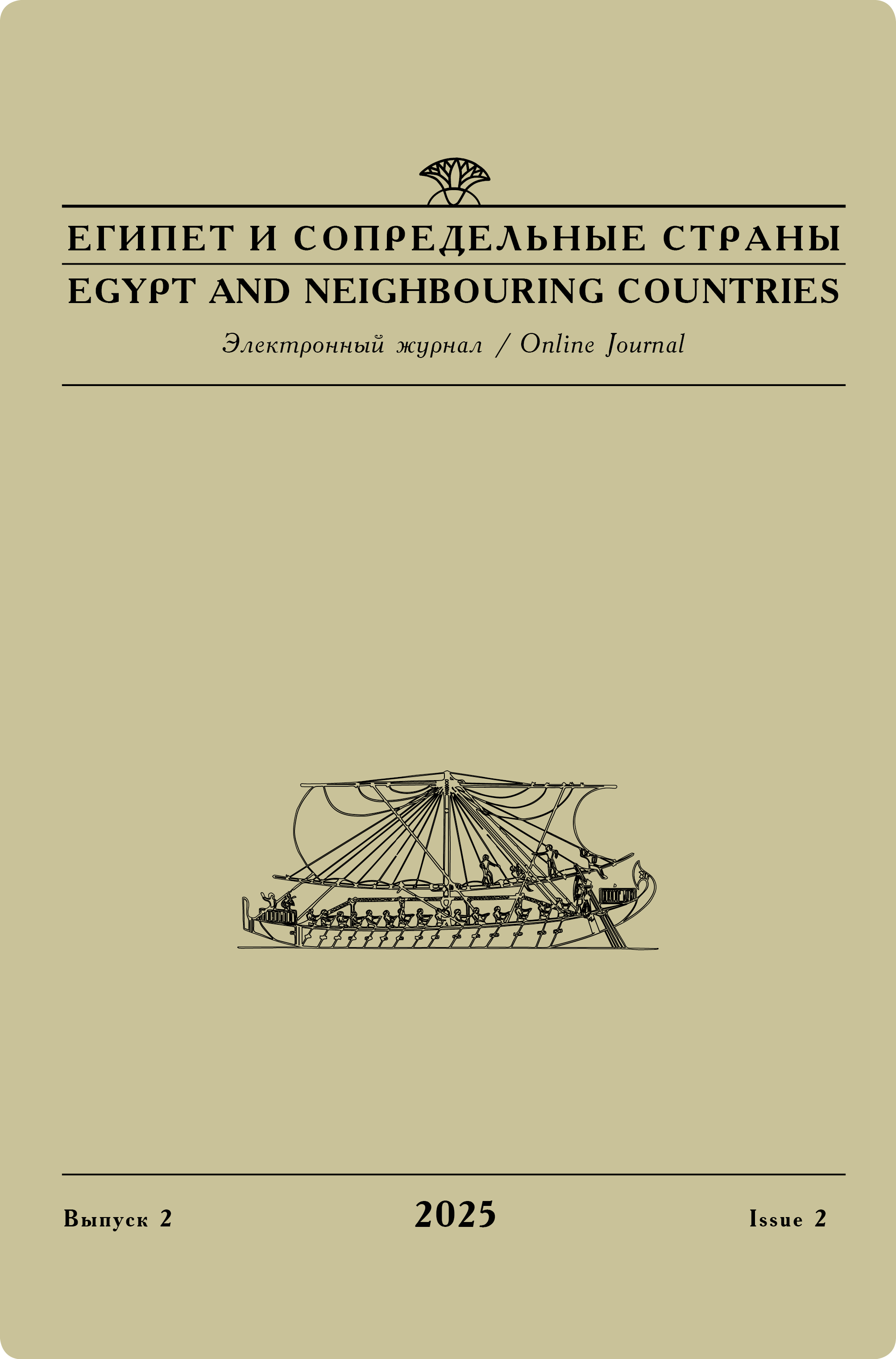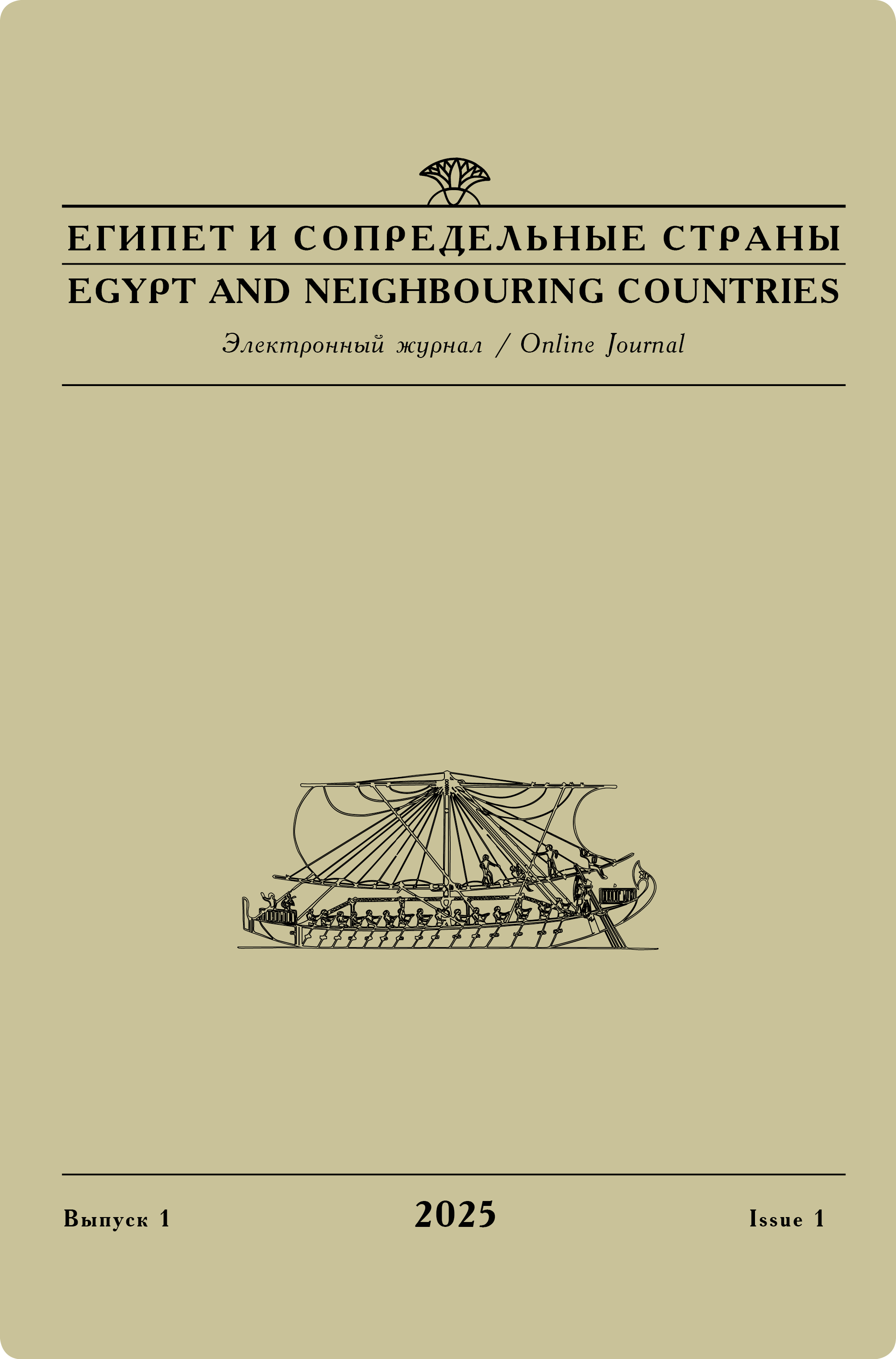Issue 4, 2021
R. A. Orekhov
O nekotorykh aspektakh formirovaniia drevneegipetskogo gosudarstva: razmyshleniia nad gipotezami Zh. Verkuttera [On some aspects of formation of the Ancient Egyptian state: reflections on the hypotheses of J. Vercoutter]
The author of this article examines several hypotheses of a French Egyptologist Jean Vercoutter related to formation of the Egyptian state in the late 4th — early 3rd millennium BC. In particular, J. Vercoutter criticizes some researchers presuming existence of a large northern kingdom in the Delta that was conquered by unified Upper Egyptian polities, which ultimately led to formation of a dual state in the Nile valley. J. Vercoutter doubts that these events could take place since artifacts confirming them mainly come from the Upper Egypt. He comes to conclusion that the Narmer palette may depict not conquest of the Delta, but victory of Hierakonpolis over Nagada or Thinis. Developing this idea, the researcher suggests that such important concepts of early Egyptian statehood as ‘Upper’ and ‘Lower Egypt’ had been originally applied to northern and southern Upper Egyptian polities and only later were filled with new content.
Keywords:
J. Vercoutter’s hypothesis, Narmer palette, Upper and Lower Egypt, formation of the Ancient Egyptian state.
Original language — Russian.
DOI: 10.24412/2686-9276-2021-00023.
Referring: Orekhov R. А. On some aspects of formation of the Ancient Egyptian state: reflections on the hypotheses of J. Vercoutter [in Russian] // Egypt and neighbouring countries 4 (2021): 93–99. DOI: 10.24412/2686-9276-2021-00023.
Read full article




